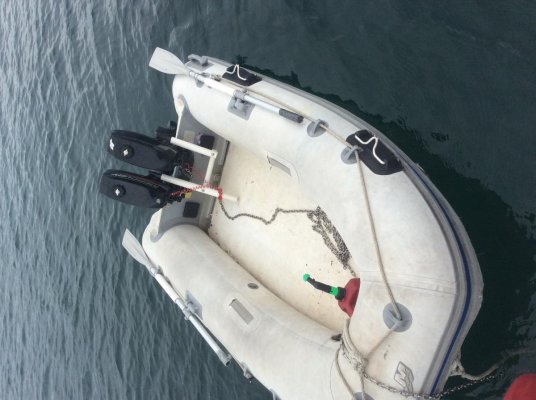O C Diver
Guru
- Joined
- Dec 16, 2010
- Messages
- 12,865
- Location
- USA
- Vessel Name
- Slow Hand
- Vessel Make
- Cherubini Independence 45
Had a problem with my dinghy motor about 20' from the dock when returning from an extensive run at Isle Royale a week ago. No problem, rowed to the dock. Contacted the manufacturer and received a replacement carburetor under warranty. Installed it today; ran great for 50 minutes and then died.
Not going to disclose the manufacturer as it's not relative to the thread. What I do regarding the current motor (repair or replace ), also isn't relative to the purpose of the thread.
Rowed and let the wind push my RIB back to the mother ship. An hour to go maybe a half a mile. I think I could row a cast iron bathtub faster.
I use my dinghy to go exploring off the beaten path. Getting towed back or having cell service may not be an option (wouldn't have been available at Isle Royale). So as I was struggling to get back, my mind is going, "The first one was easy. This second one is your wakeup call. Hey stupid, what's plan B when you're 5 miles away? "
So I'm open to suggestions.
Ted
Not going to disclose the manufacturer as it's not relative to the thread. What I do regarding the current motor (repair or replace ), also isn't relative to the purpose of the thread.
Rowed and let the wind push my RIB back to the mother ship. An hour to go maybe a half a mile. I think I could row a cast iron bathtub faster.
I use my dinghy to go exploring off the beaten path. Getting towed back or having cell service may not be an option (wouldn't have been available at Isle Royale). So as I was struggling to get back, my mind is going, "The first one was easy. This second one is your wakeup call. Hey stupid, what's plan B when you're 5 miles away? "
So I'm open to suggestions.
Ted


